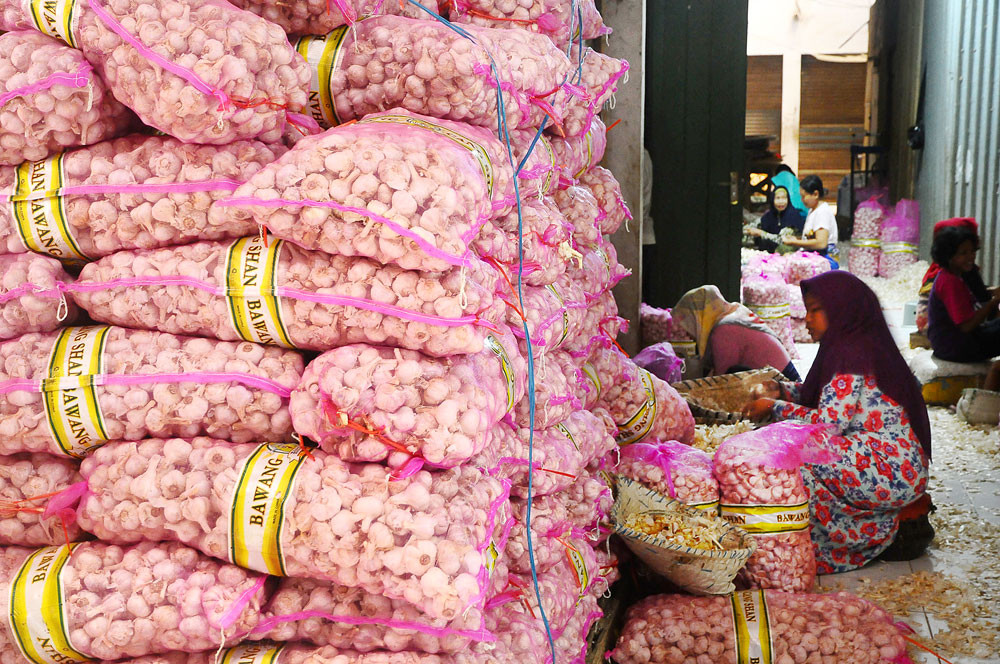
Rising garlic price cannot be blamed on coronavirus: Business watchdog
by Made Anthony IswaraThe Business Competition Supervisory Commission (KPPU) has rejected claims that the novel coronavirus disease (COVID-19) has diminished garlic supply from China, which had been blamed for a price spike of the commodity in Indonesia.
KPPU commissioner Guntur Saragih said garlic demand and consumption were relatively stable. Instead, he blamed slow import realization for the scarcity, which he said had already happened before the virus broke out.
The watchdog said the government had just issued an import recommendation for more than 100,000 tons, around 60,000 tons of which would be used to ensure supplies until the Lebaran holidays. However, those imports had yet to materialize as of Thursday.
"It’s a problem when imports are done late. Supply will certainly thin out, thus automatically shifting [prices]," Guntur said.
However, he said his team's investigation had yet to ascertain whether importers were intentionally holding back imports to push up prices.
The price currently stands at a national average of Rp 55,000 (US$4.01) per kilogram, double the usual Rp 25,000 to Rp 30,000 per kg, according to the Information Center for Strategic Food Prices (PIHPS).
But this is not the first time garlic prices skyrocketed. Last year, garlic prices spiked to more than Rp 80,000 per kg due to import recommendations not being issued until April 2019.
"And we are pushing [the government] to not let this drag out until April again," Guntur warned for 2020.
KPPU director of business competition policy Taufik Ahmad said garlic retail prices in Jakarta and a few other cities could climb up to Rp 70,000 or Rp 80,000 per kg.
But he noted that similar price volatility had been happening in the first quarter of the past three to four years. The price would usually go back to normal around May or June.
"Maybe the problem is not the virus. We received information that there are transportation issues [...] that have halted [export] flows from some points in China," Taufik said.
He also said that the government had eased import procedures through a 2019 Agriculture Ministry regulation, as long as garlic importers adhere to the mandatory cultivation of the vegetable after obtaining import licenses.
Previously, the Trade Ministry’s price monitoring team head for North Sumatra, Gunawan Benjamin, said the continuous news about the coronavirus had shaken up domestic food prices – especially imported ingredients.
Over the past week, North Sumatra and Central Java residents have seen the price of garlic – a staple ingredient in Indonesia – skyrocket, as supplies run short, with some believing the shortage is a result of the virus outbreak in China.
According to Statistics Indonesia (BPS), North Sumatra’s garlic imports declined by 58.4 percent to 29.24 million tons last year from 70.41 million tons in 2018. Of the 2018 imports, 70.18 million tons were imported from China, while the rest came from India.
Meanwhile in Central Java, garlic prices jumped 30 percent to the current Rp 50,000 (US$3.65) per kg from the usual Rp 35,000 per kg.
“About 95 percent of the garlic supplies here are imported directly from China, and the virus is hampering it. We hope there will be import options from other countries soon,” Central Java Industry and Trade Agency head Arief Sambodo said, as quoted by kompas.com.